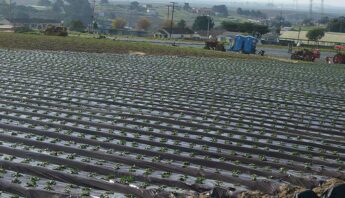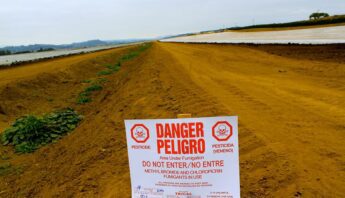For Immediate Release: May 5, 2014
Contact: Paul Towers, 916-216-1082, ptowers@panna.org
Details emerge on hazardous pesticide use near California schools
Oakland, CA – Following the release of a groundbreaking report last week, public health officials released additional details from their research, including specific amounts of hazardous pesticides used near California schools. The new data shows the exact amounts and types of pesticides used in close proximity (within ¼ mile) to schools, though officials have yet to release data on hazardous pesticides at slightly further distances. Over 600,000 pounds of hazardous pesticides are used near California schools – many linked to harms in the brain and nervous system.
Margaret Reeves, PhD, senior scientist at Pesticide Action Network, analyzed the data and released the following statement:
“The numbers are compelling and deserve attention. Even in very small amounts, pesticides can have profound impacts on children’s health and intelligence. They point to a larger need to dramatically reduce the use of hazardous pesticides, and create better protections for the state’s schoolchildren.
Nearly 10,000 thousand pounds of neurotoxic chlorpyrifos are used in close proximity to California schools. The pesticide is linked to falling IQs, increased risk of ADHD and other developmental disorders. State monitors, as well as independent monitoring in communities, show that pesticides like chlorpyrifos regularly drift. As details continue to emerge around amounts and types of pesticides used near California schools, policymakers should consider larger no-spray buffer zones.
State regulators also acknowledge gaseous fumigant pesticides, applied in large volumes near schools, can drift for many days after initial applications. Schoolchildren face ongoing and potentially repeated exposures to fumigants like cancer causing chloropicrin and Telone. State officials need to make deep investments in safer, cutting-edge alternatives to hazardous and outdated fumigants to help farmers make the switch.”
According to the new data, the top 10 schools with the largest total amounts of pesticides applied nearby (within ¼ mile) are:
###
Related resources:
Protecting Their Potential (English)
Protegiendo Su Futuro (Spanish)







